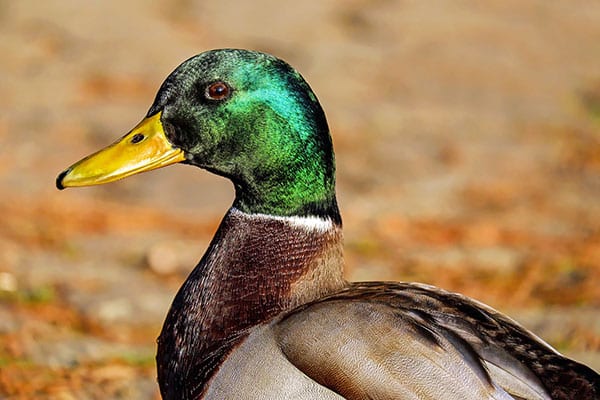
BASC calls for voluntary restraint of shooting of wildfowl in Scotland
BASC have called for a voluntary restraint of the shooting of wildfowl from the 6th January.
Get information on the legal shooting season for mammals and birds in the UK.
Learn about our current conservation projects and how you can get involved.
Comprehensive information and advice from our specialist firearms team.
Everything you need to know about shotgun, rifle and airgun ammunition.
Find our up-to-date information, advice and links to government resources.
Everything you need to know on firearms law and licensing.
All the latest news and advice on general licences and how they affect you.


MARTIN PUDDIFER meets another artisan working in the country sports market – a decoy maker – who brings a unique individuality to his creations.
There is something alluring, almost comforting, about sporting goods that have been handcrafted by someone with a creative eye who uses quality materials and time-served equipment to produce something individual that is built to last. How often have you seen someone proudly brandishing a walking stick, doffing a cap or sipping from a hip flask that had been commissioned (or even made) by a late relative, a priceless item which bears the scars of decades of field life and has been met with inquisitive looks and countless questions as to its origins?
Early on in my former life as a magazine journalist, I was lucky enough to be gifted a horned shepherd’s crook by the captain of a West Sussex shoot. It is a thing of beauty which was originally handcrafted using three separate types of wood. Over the following seasons, I lost count of the number of theories shooting folk from Devon to Aberdeenshire had as to the stick’s true composition, but it always broke the ice and that was invaluable. There are thousands of shepherd’s crooks out there but I’d know mine a mile away. That’s why I love it.
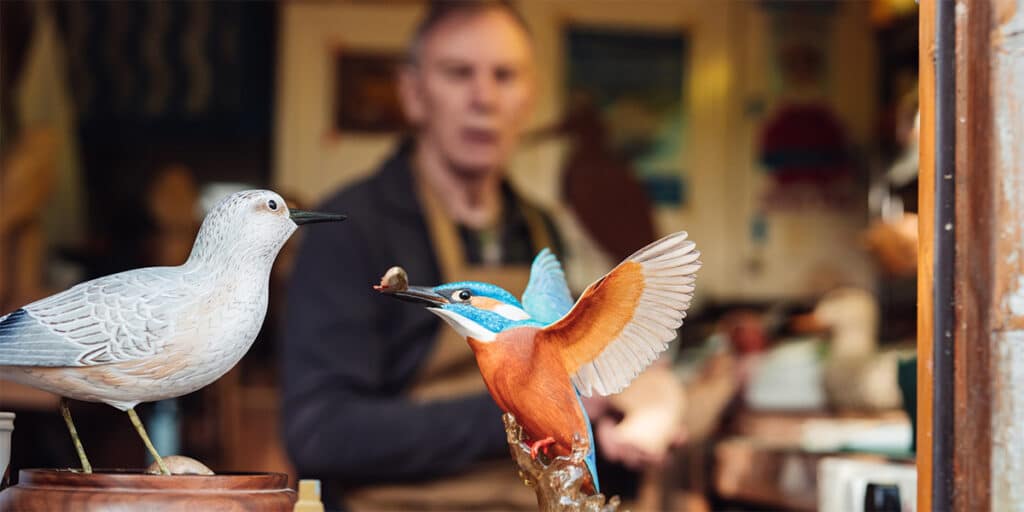
Since he was a youngster, Trevor Turnnidge has been interested in woodcraft and wildfowling. The artistic 71-year-old from Leigh-on-Sea excelled at the practical subjects in school and even honed his skills during the summer holidays while working as a carpenter’s labourer. After leaving full-time education in the late 1960s, Trevor served a four-year apprenticeship as a carpenter and joiner, plying his trade until his early retirement in 2008.
An interest in creating decoys, both for decorative and functional use, first developed in 1989 following the loss of his wife Hazel to cancer a year earlier. In need of a project and something to occupy his mind, Trevor, who had two young children at the time, began spending his nights in his workshop and was inspired to give decoys a try after seeing the work of Norfolk decoy carver Roger Jeeves in John Humphreys’ book Hides, Calls and Decoys.
A natural affinity with wildfowl and wood has led to Trevor creating some astonishing pieces of work over the years. While teal are his most common creation, woodcock, kingfishers, goldfinches and even seagulls have all passed his bench.
Whatever their eventual purpose, Trevor’s lifelong relationship with his subjects has given him an edge when attempting to create authentic pieces. “Making my decoys true to life has come with practice,” Trevor explains. “You’ve got to make sure that the profile of the bird is recognisable before painting it – if you’re carving a teal it can’t look like any duck.”
Working mostly with lime for decorative decoys, and pine and cork for their functional counterparts, the Leigh-on-Sea Wildfowlers veteran, a self-confessed perfectionist, can often be found out on the marsh during the close season gaining inspiration for his next creation. He uses the rewards from a flight to assess a particular bird’s dimensions, character and unique colour palette, before preparing the carcass for the oven.
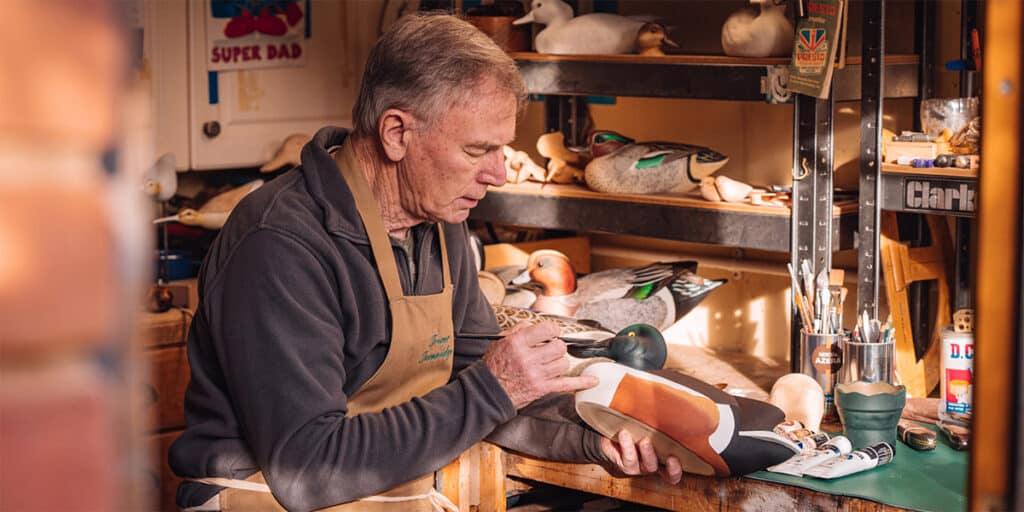
Drawings of separate head and body poses are made before creating a profile, which is transferred to a block of wood and cut out on a bandsaw to create a square decoy before the detailing and painting begin. A floating decoy could take up to five days to complete, while highly complex decoys could take as long as a month, with prices around £350 and £1,500 respectively.
“When I first started, I only used hand tools, chisels and drawknives to shape the wood, eventually progressing to rotary carving tools,” Trevor explains. “If you’re making a floating decoy, you can’t just cut one out and leave it as a solid piece of wood – you have to hollow it out.
“Getting decoys to balance properly is quite time-consuming because the decoy has to float nicely in the water and self-right when it is thrown in or turned over by the weather. So to avoid it becoming saturated I’d wrap it in cling film, float it on the water, then make a note of how it behaves and make necessary changes from there.”
Trevor is currently working on a drake shoveler and uses quick-drying acrylics to paint his decoys, preferring them to the easier-to-blend but slow-drying oils favoured in the US. “US wildfowlers love oil because of the patina that builds up over time. I have used oils in the past, but they take a long time to dry. If you’re going to paint a decoy with them you’ve probably got to wait six months before you can varnish it to waterproof it. It’s not good to have your decoys shiny, so you must use matte varnish.”
The quality of the decoys speaks for itself and Trevor has long been keen to pass on his skills and experience to budding decoy makers and to fellow wildfowlers in the Essex area. His work has been recognised in wood carving championships and a steady stream of commissions continues to come in throughout the year. As well as creating decorative decoys for his own pleasure, he’s always on the lookout for something new. “I’d love to carve gamebirds, though probably partridges first, given how large and intricate pheasants are,” Trevor concludes.
MARTIN PUDDIFER is a BASC member and freelance writer.
IMAGES: CALLUM MCINERNEY-RILEY

BASC have called for a voluntary restraint of the shooting of wildfowl from the 6th January.
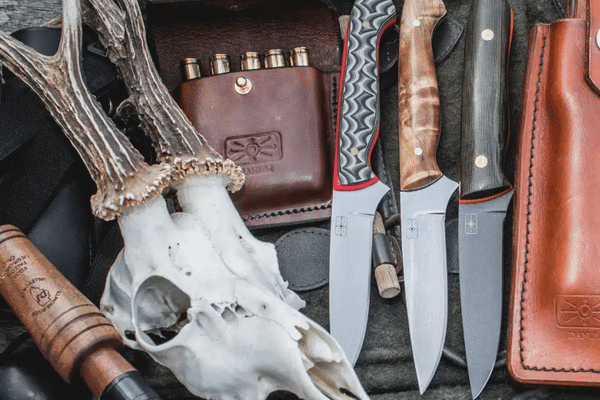
To appreciate craftsmanship is to look beyond what an item is and delve into how it came to be, says Will Pocklington.
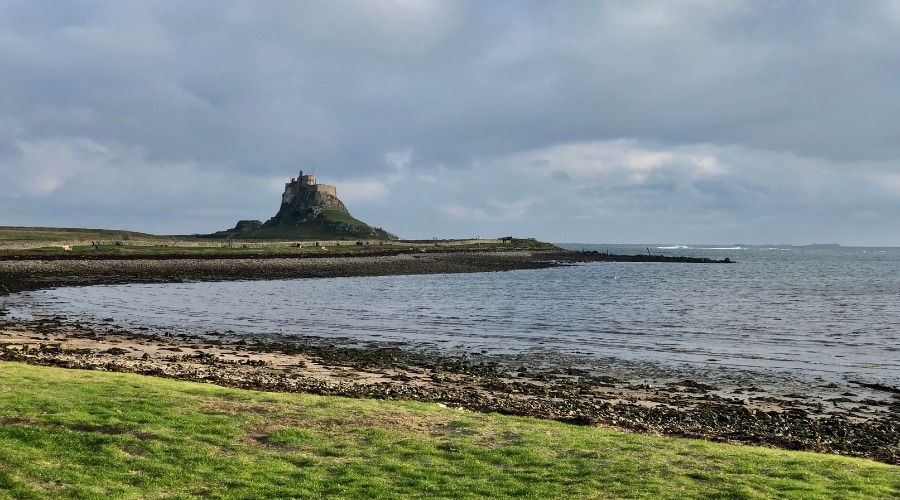
Perched high on the east coast shoulder of Northumberland lies the wild and remote Lindisfarne, an ancient land steeped in history and tradition.
Sign up to our weekly newsletter and get all the latest updates straight to your inbox.
© 2023 British Association for Shooting and Conservation. Registered Office: Marford Mill, Rossett, Wrexham, LL12 0HL – Registered Society No: 28488R. BASC is a trading name of the British Association for Shooting and Conservation Limited which is authorised and regulated by the Financial Conduct Authority (FCA) under firm reference number 311937.
If you have any questions or complaints about your BASC membership insurance cover, please email us. More information about resolving complaints can be found on the FCA website or on the EU ODR platform.
This website uses cookies so that we can provide you with the best user experience possible. Cookie information is stored in your browser and performs functions such as recognising you when you return to our website and helping our team to understand which sections of the website you find most interesting and useful.
Strictly Necessary Cookie should be enabled at all times so that we can save your preferences for cookie settings.
If you disable this cookie, we will not be able to save your preferences. This means that every time you visit this website you will need to enable or disable cookies again.
This website uses Google Analytics to collect anonymous information such as the number of visitors to the site, and the most popular pages.
Keeping this cookie enabled helps us to improve our website.
Please enable Strictly Necessary Cookies first so that we can save your preferences!
More information about our Cookie Policy